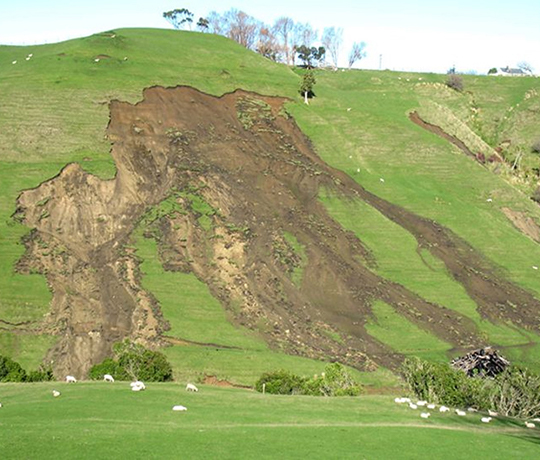| Funder | Collaborators | Duration |
|---|---|---|
| Northland, Waikato, Horizons, Hawke’s Bay, Auckland Council, Environment Southland, Ministry for the Environment, Ministry for Primary Industry, Our Land & Water National Science Challenge, and Federated Farmers | NIWA, Massey University, Waikato University and international collaborators from KU Leuvin, IRSTEA, University of Salzburg, HAFL Switzerland. Our partners include Whanganui iwi (Tamaūpoko Community Group) and Rangitāne o Manawatū. |
4 years 9 months
Start date: 01 Oct 2018 End date: 01 Jul 2023 |

Exploring cost-effective ways of targeting land-based erosion control
To meet national freshwater objectives for catchment management, regional councils and land managers need higher-resolution data on catchment erosion and sediment delivery to streams, and new tools and models that provide information at appropriate scales. These are essential for efficient and cost-effective erosion and sediment mitigation, and will also assist planning for predicted increased storminess as a result of climate change.
The NZ landscape is characterised by a complex array of erosion processes with high spatial and temporal variability, which provides a challenging environment for process-based erosion and sediment science and modelling. Our research will address global research questions and put NZ at the forefront of international research by significantly improving understanding of:
- spatial and temporal patterns of erosion
- sediment-related water quality
- sediment mitigation performance
- model refinement (e.g. from average annual to storm-event scale)
- the economic analysis of erosion and sediment mitigation.
A 5-year MBIE funded programme Smarter Targeting of Erosion Control is now well underway, exploring cost-effective ways of targeting land-based erosion control in the hope of slowing the damage and improving water quality. The programme is led by Manaaki Whenua – Landcare Research in collaboration with NIWA, Massey University, Waikato University, international researchers, programme partners Whanganui iwi (Tamaūpoko Community group) and Rangitāne o Manawatū, as well as several regional councils.
Research is focusing on four catchments across New Zealand: the Manawatu – for new and continuing data collection; the Whanganui – to investigate impacts from the 2018 storm and legacy sediments; and the Oreti in Southland and Wairoa near Auckland – to research storm event sediment loads and sediment source fingerprinting methods in collaboration with NIWA’s Managing Mud programme.
More information
https://www.landcareresearch.co.nz/discover-our-research/land/erosion-and-sediment/smarter-targeting-of-erosion-control/Contact details
Hugh Smith
Manaaki Whenua - Landcare Research, Palmerston North, New Zealand
P:
+64 6 353 4809
Email Hugh